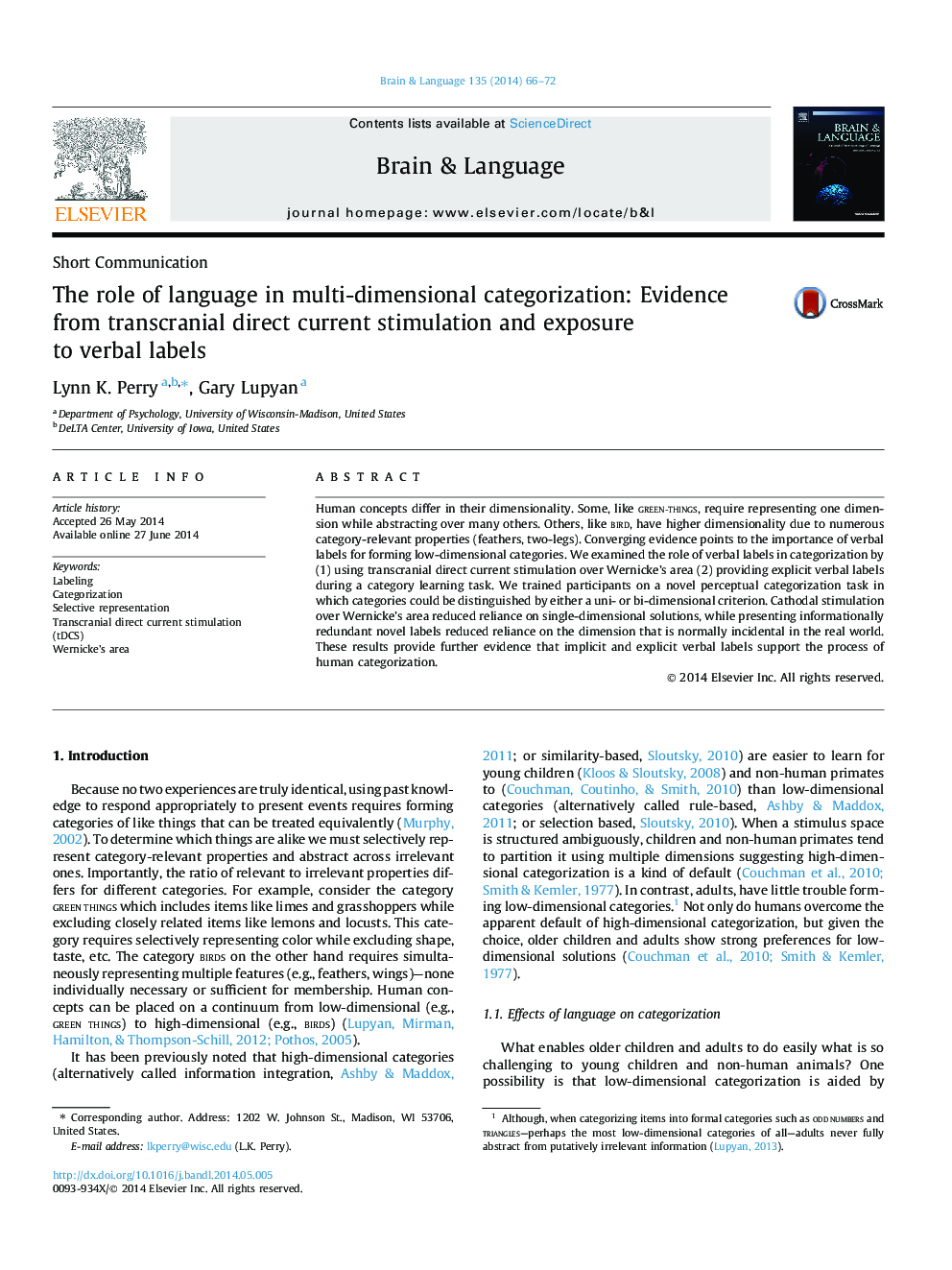| Article ID | Journal | Published Year | Pages | File Type |
|---|---|---|---|---|
| 925286 | Brain and Language | 2014 | 7 Pages |
•We examined how stimulating Wernicke’s area via tDCS affected category learning.•Cathodal stimulation over Wernicke’s area reduced reliance on uni-dimensional categorization.•We also examined how explicit category labels affects category learning.•Novel category labels reduced reliance on incidental dimensions.•Labeling influenced which dimensions were used in categorization.
Human concepts differ in their dimensionality. Some, like green-things, require representing one dimension while abstracting over many others. Others, like bird, have higher dimensionality due to numerous category-relevant properties (feathers, two-legs). Converging evidence points to the importance of verbal labels for forming low-dimensional categories. We examined the role of verbal labels in categorization by (1) using transcranial direct current stimulation over Wernicke’s area (2) providing explicit verbal labels during a category learning task. We trained participants on a novel perceptual categorization task in which categories could be distinguished by either a uni- or bi-dimensional criterion. Cathodal stimulation over Wernicke’s area reduced reliance on single-dimensional solutions, while presenting informationally redundant novel labels reduced reliance on the dimension that is normally incidental in the real world. These results provide further evidence that implicit and explicit verbal labels support the process of human categorization.
